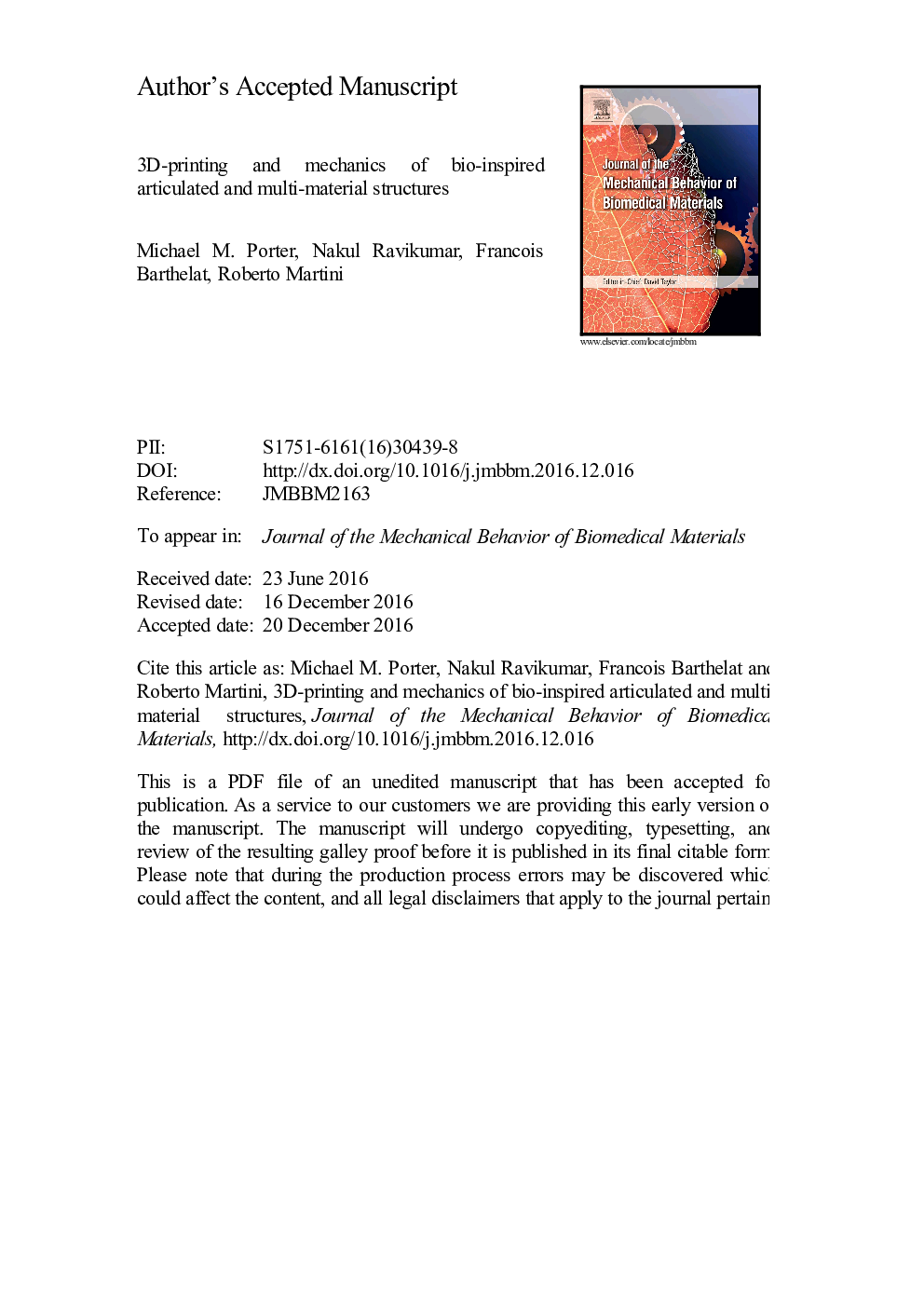| Article ID | Journal | Published Year | Pages | File Type |
|---|---|---|---|---|
| 5020556 | Journal of the Mechanical Behavior of Biomedical Materials | 2017 | 38 Pages |
Abstract
3D-printing technologies allow researchers to build simplified physical models of complex biological systems to more easily investigate their mechanics. In recent years, a number of 3D-printed structures inspired by the dermal armors of various fishes have been developed to study their multiple mechanical functionalities, including flexible protection, improved hydrodynamics, body support, or tail prehensility. Natural fish armors are generally classified according to their shape, material and structural properties as elasmoid scales, ganoid scales, placoid scales, carapace scutes, or bony plates. Each type of dermal armor forms distinct articulation patterns that facilitate different functional advantages. In this paper, we highlight recent studies that developed 3D-printed structures not only to inform the design and application of some articulated and multi-material structures, but also to explain the mechanics of the natural biological systems they mimic.
Keywords
Related Topics
Physical Sciences and Engineering
Engineering
Biomedical Engineering
Authors
Michael M. Porter, Nakul Ravikumar, Francois Barthelat, Roberto Martini,
